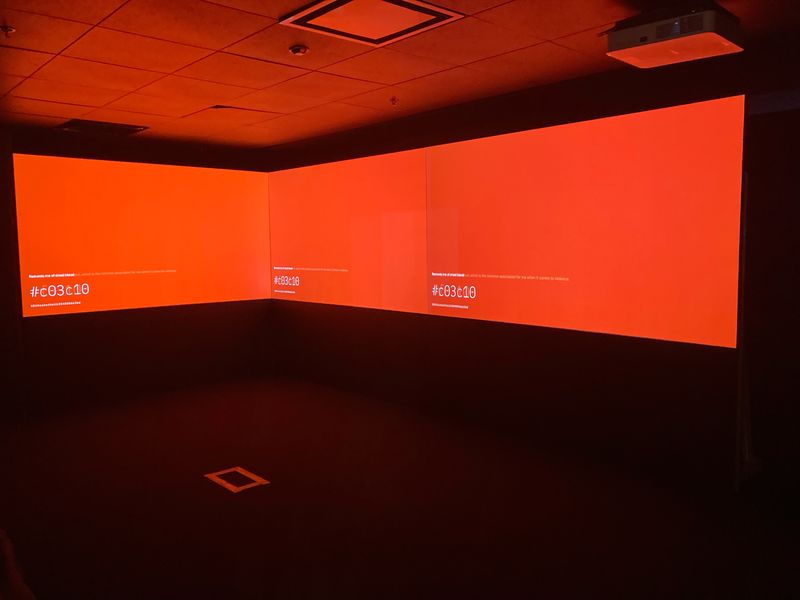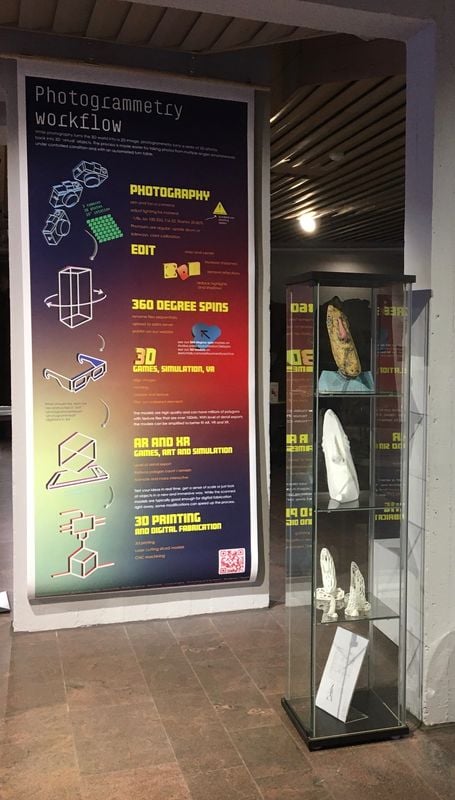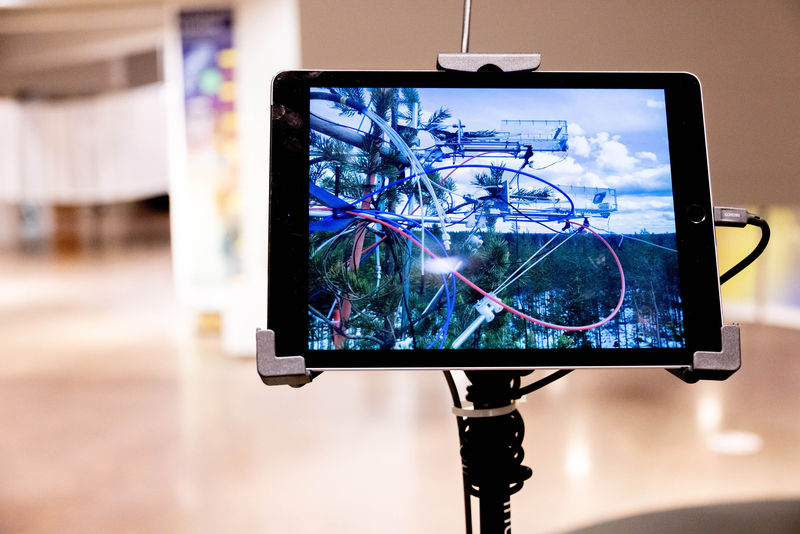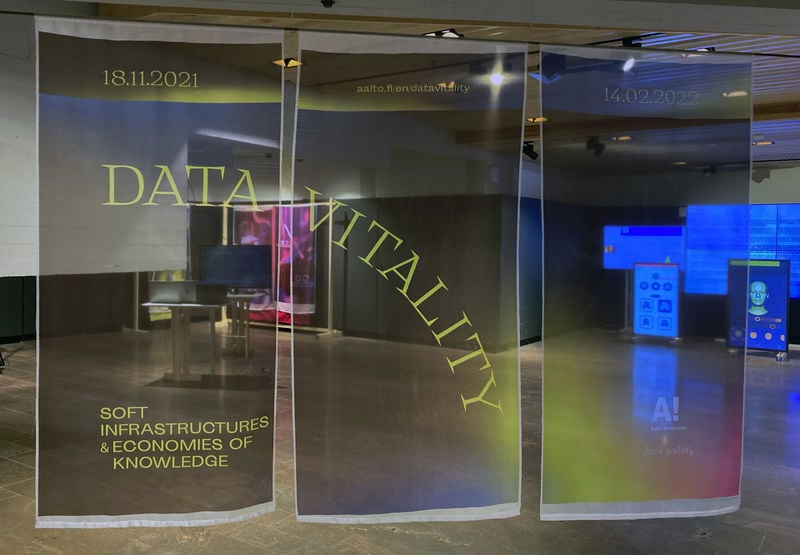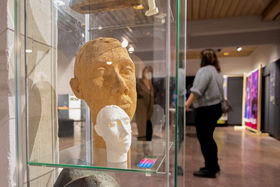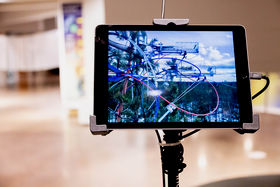Exhibition concentrating on data is rare, even internationally
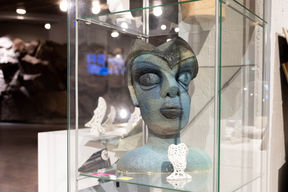
The Data Vitality exhibition, which just opened in Dipoli Gallery, has quite a unique topic: The exhibition explores the changing role of data in society and combines perspectives on how data is shaping education and research across art, science, business and technology. The exhibition is also the pilot site of the new Aalto virtual exhibition platform; thus, you are able to dive into the ocean of data from your own sofa.
Several Aalto schools are part of this cross-disciplinary exhibition, and the basis of the whole project is to get people to think what it means to be a data-driven university – a goal that is stated in the university’s strategy. The exhibition offers various points of entry to data for Aalto community members, partners and the broader public. Understanding the changes in how data is driving decision making institutionally and at a policy level provides a greater ability to control and manage your data rights, data literacy and intellectual property.
‘Exhibitions can act as an interface to research, thinking and practices in society. In a university context, they offer a material way to engage with how data affects our lives in research and society. Data is driving decision making and policy changes at a local and global level, and that influence is seen in Aalto’s strategic goals, one of which is to develop an understanding of what it means to be a data-driven university. There isn’t just one answer to that question but rather a variety of different contexts, impacts and experiences that the exhibition presents. Our current choices inform future practices, so it’s important to stimulate more discussion of how we use data and how data is used as a resource,’ describes the exhibition’s curator, Edel O’Reilly, articulating the significance of the exhibition.
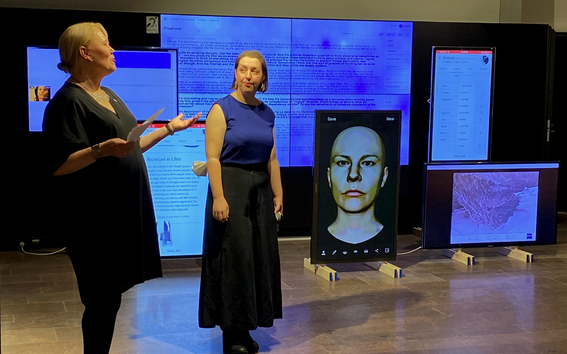
Exhibition’s Curator, Edel O’Reilly,Data is driving decision making and policy changes at a local and global level, and that influence is seen in Aalto’s strategic goals.
The exhibition includes interviews with a selection of professors and other professionals from different schools on the topic of how data-driven and open data practices impact their disciplines, ranging from economics to quantum technology. Aalto University’s own operations are also discussed, showing how data have become the new water we need for university operation and decision making and how Aalto people in various work roles have gradually started to see, understand, value and share data in their daily work.
Chief Digital Officer Kati Hagros inher opening speech of the Data Vitality exhibition:
'My favourite thing in the world is to lie on the rock in the night on our summer cottage and think about big questions like how the universe began and why space is so big and beautiful. However, in this modern world, it’s not only space that’s interesting. We humans have created a totally new universe, a digital universe which is full of big new questions. So let’s start asking ourselves these questions about data: Can we live without data anymore? How much data does humankind need? Can data save the planet? Can data last forever? Can data be beautiful?’
You can visit the exhibition at Dipoli Gallery or virtually until 14 February 2022
- Dipoli Gallery: Otakaari 24, 1st floor, the space is a public space open to everybody.
- You can check Dipoli opening hours here.
- Dipoli is also open during the holiday season (20.12.2021 – 7.1.2022 opening hours are 08:00 – 15:30), if you wish visit during a time period when the university is otherwise almost sleeping.
- We strongly recommend the use of face masks in all our spaces.
- The exhibition can be visited virtually here:
https://virtualexhibitions.aalto.fi/data-vitality
Read more
- Published:
- Updated:
Read more news

DeployAI Partners Gather for Heart Beat Meeting in Helsinki
The European DeployAI project's partners gathered for the Heart Beat meeting hosted by Aalto University Executive Education in Helsinki.
Get to know us: Associate Professor Maria Sammalkorpi
Sammalkorpi received her doctorate from Helsinki University of Technology 2004. After her defence, she has worked as a researcher at the Universities of Princeton, Yale and Aalto.
Aalto computer scientists in ICML 2024
Computer scientists in ICML 2024
